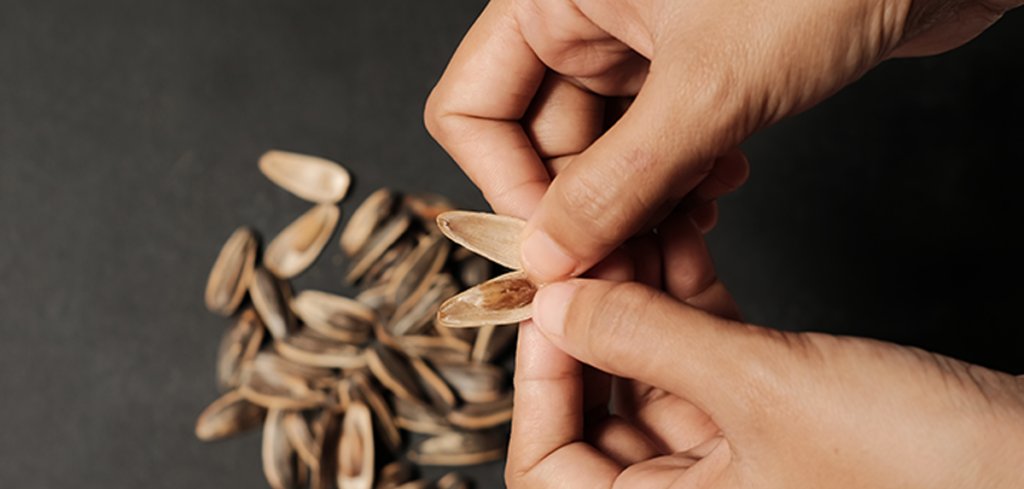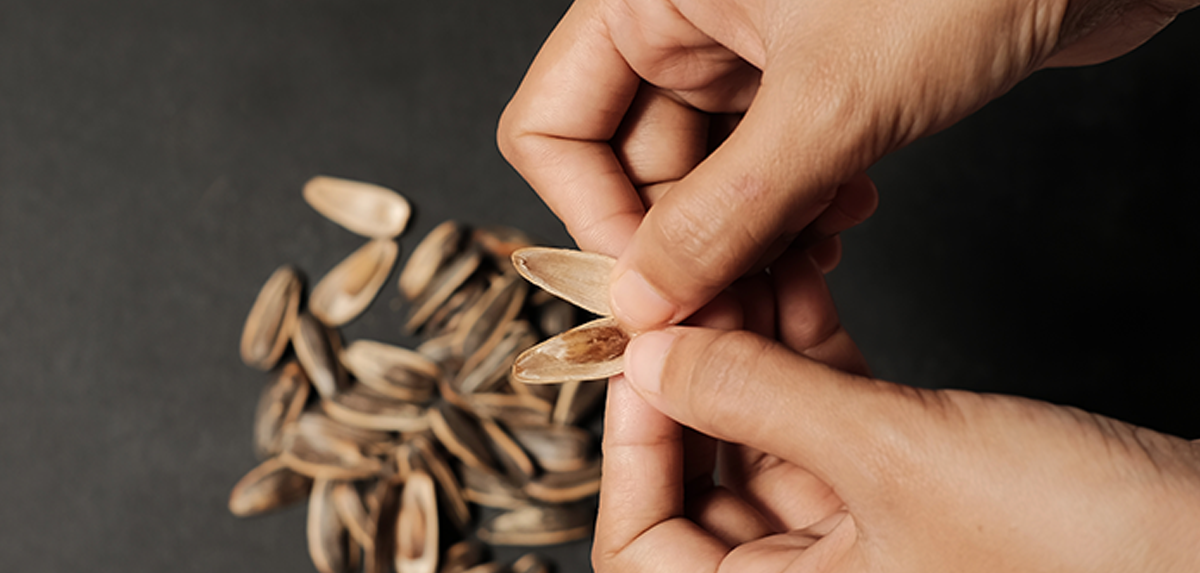
Nearly every seed is protected by an outer covering, or hull, that contains very little fat or protein content. In the oilseed processing industry where fat and protein drive the value of products, removing this hull can help maximize the profits of the other byproducts. But adding dehulling equipment adds operational expenses, so processors must carefully weigh whether these investments will pay off in their plant.
In this article, we’ll take a deep dive into the dehulling process and explore the economic pros and cons of this added step to help processors decide whether it’s worth the added cost.
What is dehulling?
Dehulling is simply the process of removing the protective covering, or hull, that encapsulates oilseeds. For example, approximately 6-8% of a soybean’s total weight is made up of the hull. Sunflowers, by comparison, have a much thicker shell, so their hull comprises about 20-30% of their weight.
Although this outer shell contains essentially no fats or proteins, leaving it in the seed processing stream can negatively affect the quality of the other byproducts because:
- Hulls absorb fat during oil processing, which can reduce the overall oil yields.
- Hulls dilute the protein content in the meal with extra fiber, which can reduce the value of the meal.
- Hulls contain waxes and color pigments that can end up in the pressed oil, making it more expensive to filter and refine.
Removing the hull can improve oil yields and increase the protein concentration—and therefore the value—of the meal. But just how much profit can processors expect from dehulled oilseed products? That requires a closer look at the process.
Also read: The Challenge of Small-Scale Oilseed Processing: Paying Off Your Investment
How does dehulling equipment work?
Removing seed hulls isn’t as simple or precise as peeling the shell off a peanut or pistachio. The process varies for each type of seed, depending on the weight and thickness of the hull.
Traditional dehulling equipment consists of a device to crack the whole seed open to break the hull off the rest of the seed and an array of aspiration and screening equipment to separate the hulls from the rest of the material. The type and order of the equipment will vary depending on the seed and the efficiency of the de-hulling system desired. In many cases, there are multiple stages of aspiration and screening to increase the number of hulls that are removed and to recover seed particles that were removed accidental with the hulls. The number of steps has major implications on the operating efficiency of the system and thus the crush margin of the oilseed processor. For the remainder of the discussion, we will discuss in terms of soybean.
- A single-stage dehulling system will remove about 12% of the material—but unfortunately, about a third of this material is small seed meats that get separated along with the hulls. By relying on a single pass, processors could be throwing away a portion of meats that contain fats and proteins — essentially discarding some potentially valuable byproducts with the hulls.
- A two-stage dehulling system, will recover 10% of the meats that were accidentally removed in stage one and return them back into the processing stream for pressing and extrusion. Some processors may also choose to add an air filtration system to minimize dust accumulation and keep fiber particles out of the air in their plant.
A two-stage system will minimize the amount of meats lost, but it can cost about 3 times as much as a single stage de-hulling system. Given the expense of industrial dehulling equipment, it can be cost-prohibitive for small processing plants to implement. Large processors are much more likely to invest in these systems, especially high-capacity solvent extraction plants that want to get every possible drop of oil from their seeds. However, the upfront equipment cost isn’t the only consideration that factors into your decision.
Also read: 4 Red Flags to Avoid When Buying Used Oilseed Processing Equipment
Is dehulling worth the investment?
Besides the capital expense of the machines, the economics of dehulling require an in-depth look at your processing operation, byproduct outputs, and end markets. As with any investment, processors must be able to justify the added cost of this additional step.
Here are some factors to consider when weighing the economics of hull removal.
- Lower operating costs
If you’re processing 100 tons of soybeans per day and 8% of that weight is just hulls, then you’re essentially paying the operating costs to process 8 tons of hulls that don’t produce any fat or protein. Why waste that money and energy heating, drying, and pressing hulls when there’s no significant value to be gained?
By dehulling your seed material, you’re removing at least 8% of the mass that you’re paying to convey through your plant — which means you’re saving at a minimum 8% on your electrical bills by adding a de-hulling step. Considering the electrical costs of running an oil expeller press and extruder all day at high capacity, removing hulls from your processing stream could save you tens of thousands of dollars a year.
- Reduced wear and tear
Since hulls are primarily made of fiber, they make up the most abrasive portion of the seed. Processing this material along with the oil-rich seed meats exacerbates wear and tear on your equipment.
Even though these machines are built with durability in mind, any steps you can take to ease the daily strain on your equipment will pay off in the long run — especially when you consider the cost of downtime when you have to repair or replace worn parts. Dehulling can decrease this downtime by reducing wear and tear.
- Byproduct price comparisons
With high levels of digestible fiber, soy hulls can be processed into fiber bran breads, cereals, and snacks, or sold into the livestock feed market. But since fiber isn’t nearly as valuable as protein or fat, do hull prices justify the effort and expense of processing it as a separate byproduct?
Let’s say high-protein dehulled soy meal sells for $525 per ton, while low-protein meal fetches $490 per ton. Meanwhile, fiber hulls sold separately may only bring in $180 per ton. While these calculations may work in favor of high-capacity plants, processors must carefully evaluate whether they might actually earn more by leaving the hulls in the material than investing in dehulling equipment — not to mention the energy and operating costs required to run it.
One solution that allows processors to reap the benefits of dehulling without taking a hit on the end prices is to dehull the seeds upfront and then add the hulls back into the meal downstream. This approach allows you to save money on utility costs and reduce wear and tear during processing, but then reintroduce the hulls to produce a slightly lower-protein meal instead of trying to find a viable market to sell them separately.
To dehull or not to dehull?
If you can secure high enough profit to sell seed hulls separately, then the decision to dehull might be an easy one. In most cases, though, deciding whether or not to dehull oilseeds requires a careful cost-benefit analysis of your operation’s crush margins—the markets you supply, and the current price of various byproducts.
The oil processing experts at Anderson International can help you run these calculations to determine the costs and potential gains of incorporating dehulling into your operation. With more than a century of experience serving the oilseed processing industry, we offer depth of expertise when it comes to processing seeds as efficiently and economically as possible. We’ll help you weigh your options and design a system that’s perfectly suited to your operation’s goals, whether you decide to dehull or not.
Contact Anderson International to learn how dehulling can impact your plant’s bottom line.
